
Dance is a performing art form consisting of sequences of movement, either improvised or purposefully selected. This movement has aesthetic and often symbolic value. Dance can be categorized and described by its choreography, by its repertoire of movements, or by its historical period or place of origin.

Disco is a genre of dance music and a subculture that emerged in the 1970s from the United States' urban nightlife scene. Its sound is typified by four-on-the-floor beats, syncopated basslines, string sections, horns, electric piano, synthesizers, and electric rhythm guitars.
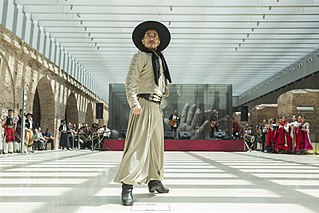
A folk dance is a dance developed by people that reflect the life of the people of a certain country or region. Not all ethnic dances are folk dances. For example, ritual dances or dances of ritual origin are not considered to be folk dances. Ritual dances are usually called "Religious dances" because of their purpose. The terms "ethnic" and "traditional" are used when it is required to emphasize the cultural roots of the dance. In this sense, nearly all folk dances are ethnic ones. If some dances, such as polka, cross ethnic boundaries and even cross the boundary between "folk" and "ballroom dance", ethnic differences are often considerable enough to mention.

Eugene Curran Kelly was an American actor, dancer, singer, filmmaker, and choreographer. He was known for his energetic and athletic dancing style, his good looks, and the likable characters that he played on screen. He starred in, choreographed, or co-directed some of the most well-regarded musical films of the 1940s and 1950s, until they fell out of fashion in the late 1950s.
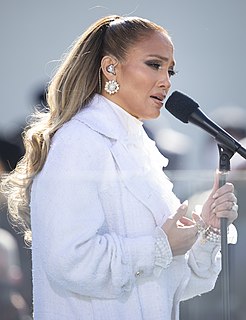
Jennifer Lynn Lopez, also known by her nickname J.Lo, is an American actress, singer and dancer. In 1991, Lopez began appearing as a Fly Girl dancer on In Living Color, where she remained a regular until she decided to pursue an acting career in 1993. For her first leading role in the 1997 Selena biopic of the same name, Lopez became the first Latin actress to earn over US$1 million for a film. She went on to star in Anaconda (1997) and Out of Sight (1998), and has subsequently established herself as one of the highest-paid Latin actresses worldwide as of 2017. Lopez is considered a pop culture icon, and is often described as a triple threat entertainer.
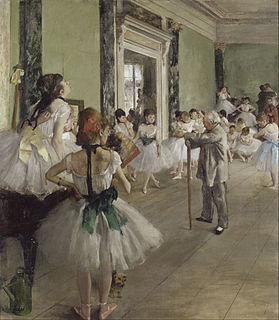
Ballet is a type of performance dance that originated during the Italian Renaissance in the fifteenth century and later developed into a concert dance form in France and Russia. It has since become a widespread and highly technical form of dance with its own vocabulary. Ballet has been influential globally and has defined the foundational techniques which are used in many other dance genres and cultures. Various schools around the world have incorporated their own cultures. As a result ballet has evolved in distinct ways.

Bharatanatyam, also previously called Sadhir Attam, is a major form of Indian classical dance that originated in Tamil Nadu. Bharatanatyam is one of the oldest classical dance traditions in India. It has been nurtured in the temples and courts of southern India since the ancient era. It is one of eight forms of dance recognized by the Sangeet Natak Akademi and it expresses South Indian religious themes and spiritual ideas, particularly of Shaivism, Vaishnavism and Shaktism.

Fred Astaire was an American actor, dancer, singer, choreographer, and television presenter. He is widely considered the most influential dancer in the history of film.

Dances with Wolves is a 1990 American epic Western film starring, directed, and produced by Kevin Costner in his feature directorial debut. It is a film adaptation of the 1988 book of the same name by Michael Blake that tells the story of Union Army lieutenant John J. Dunbar (Costner), who travels to the American frontier to find a military post, and of his dealings with a group of Lakota.

Salsa is a Latin dance associated with the music genre of the same name which was first popularized in the United States in the 1960s in New York City. Salsa is an amalgamation of Cuban dances such mambo, pachanga, and rumba as well as American dances such as swing and tap.

A stripper or exotic dancer is a person whose occupation involves performing striptease in a public adult entertainment venue such as a strip club. At times, a stripper may be hired to perform at a bachelor party or other private event.
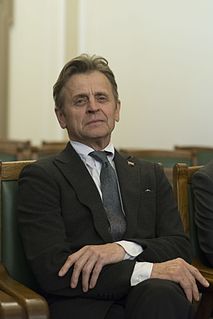
Mikhail Nikolayevich Baryshnikov is a Soviet Latvian-born Russian-American dancer, choreographer, and actor. He was the preeminent male classical dancer of the 1970s and 1980s. He subsequently became a noted dance director.

Patrick Wayne Swayze was an American actor, dancer, singer, and songwriter. Gaining fame with appearances in films during the 1980s, he was widely known for playing tough, romantic male leads. He was named by People magazine as its Sexiest Man Alive in 1991.
Dance-pop is a popular music subgenre that originated in the late 1970s to early 1980s. It is generally uptempo music intended for nightclubs with the intention of being danceable but also suitable for contemporary hit radio. Developing from a combination of dance and pop with influences of disco, post-disco and synth-pop, it is generally characterised by strong beats with easy, uncomplicated song structures which are generally more similar to pop music than the more free-form dance genre, with an emphasis on melody as well as catchy tunes. The genre, on the whole, tends to be producer-driven, despite some notable exceptions.

Dirty Dancing is a 1987 American romantic drama dance film written by Eleanor Bergstein, produced by Linda Gottlieb, and directed by Emile Ardolino. It stars Jennifer Grey as Frances "Baby" Houseman, a young woman who falls in love with dance instructor Johnny Castle, Patrick Swayze, at a holiday resort.

Strictly Come Dancing is a British television dance contest in which celebrities partner with professional dancers to compete in mainly ballroom and Latin dance. Each couple is scored by a panel of judges. The title of the show is a continuation of the long-running series Come Dancing, with an allusion to the film Strictly Ballroom. The format has been exported to 60 other countries — under the title Dancing with the Stars — licensed by BBC Worldwide, and led to a modern dance-themed spin-off Strictly Dance Fever. The Guinness World Records has named Strictly to be the world's most successful reality television format. The series is currently presented by Tess Daly and Claudia Winkleman.
Indian classical dance or 'Shastriya Devesh' is an umbrella term for various performance arts rooted in religious Hindu musical theatre styles, whose theory and practice can be traced to the Sanskrit text Natya Shastra. The number of classical dances range from eight to more, depending on the source and scholar. The Sangeet Natak Academy recognizes eight – Bharatanatyam, Kathak, Kuchipudi, Odissi, Kathakali, Sattriya, Manipuri and Mohiniyattam. Scholars such as Drid Williams add Chhau, Yakshagana and Bhagavata Mela to the list. Additionally, the Indian Ministry of Culture includes Chhau in its classical list. These dances are traditionally regional, all of them include music and recitation in local language or Sanskrit, and they represent a unity of core ideas in a diversity of styles, costumes and expression. At present officially there are 9 classical dances in India.

Dancing with the Stars is an American dance competition television series that premiered on June 1, 2005, on ABC. It is the US version of the UK series Strictly Come Dancing, and one of several iterations of the Dancing with the Stars franchise. The show was first hosted by Tom Bergeron from its inception until 2019. Lisa Canning was co-host in the first season, Samantha Harris co-hosted seasons two through nine, Brooke Burke-Charvet in seasons ten through seventeen, and Erin Andrews from season eighteen through twenty-eight. The show was renewed for its twenty-ninth season which premiered on September 14, 2020 with the addition of new host Tyra Banks, replacing Bergeron.
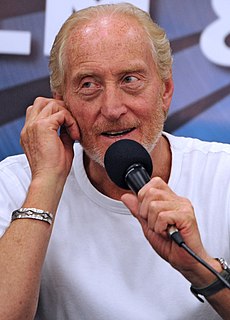
Walter Charles Dance is an English actor. Some of his highest-profile roles are Tywin Lannister in HBO's Game of Thrones (2011–2015), Karellen in Syfy's Childhood's End (2015), Guy Perron in The Jewel in the Crown (1984), Sardo Numspa in The Golden Child (1986), Dr. Jonathan Clemens in Alien 3 (1992), Benedict in Last Action Hero (1993), the Master Vampire in Dracula Untold (2014), Lord Havelock Vetinari in Terry Pratchett's Going Postal (2010), Alastair Denniston in The Imitation Game (2014), Emperor Emhyr var Emreis in The Witcher 3: Wild Hunt (2015), and William Randolph Hearst in David Fincher's Mank (2020). Most recently, he portrayed Lord Mountbatten in the third and fourth seasons of The Crown.

Dance music is music composed specifically to facilitate or accompany dancing. It can be either a whole musical piece or part of a larger musical arrangement. In terms of performance, the major categories are live dance music and recorded dance music. While there exist attestations of the combination of dance and music in ancient times, the earliest Western dance music that we can still reproduce with a degree of certainty are the surviving medieval dances. In the Baroque period, the major dance styles were noble court dances. In the classical music era, the minuet was frequently used as a third movement, although in this context it would not accompany any dancing. The waltz also arose later in the classical era. Both remained part of the romantic music period, which also saw the rise of various other nationalistic dance forms like the barcarolle, mazurka, ecossaise, ballade and polonaise.


















